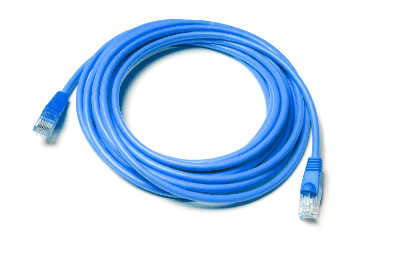What Is an Ethernet Cable?

Ethernet cables are cables compliant with the Ethernet standard, used for networking and data communication. Established by the Institute of Electrical and Electronics Engineers (IEEE) in 1980, Ethernet quickly became the global standard for Local Area Networks (LANs). These cables have evolved alongside network technology advancements, with various types introduced to meet changing standards.
One of the earliest Ethernet cables, the 10BASE5, was thick and often yellow, leading to its nickname “yellow cable.” It had a maximum length of 500 meters and a communication speed of 10 Mbps. Its specifications, including terminal adapters and transceivers, were standardized to ensure compatibility and efficiency in network setups.
Uses of Ethernet Cables
Ethernet cables are foundational in wired LANs, connecting computers and facilitating data exchange. They form part of the physical layer of the OSI reference model, a seven-layer standard protocol for computer communication developed by the International Organization for Standardization (ISO). Commonly used Ethernet cables in offices are unshielded twisted pair (UTP) cables with RJ45 connectors, adhering to Ethernet standards. These cables are distinct from USB or HDMI cables, which follow different standards for connecting computers to peripherals or transmitting audiovisual data.
Principles of Ethernet Cables
Ethernet is integral to the OSI reference model’s physical and data link layers. The physical layer outlines specifications for cables, signals, and connectors, while the data link layer defines data handling, including frame segmentation and addressing. This standardization allows for global interoperability, enabling devices to connect seamlessly to wired LANs worldwide. Various Ethernet cables differ in thickness, shape, and connector types, but all conform to these established standards.
Types of Ethernet Cables
Since their inception in the 1980s, Ethernet cables have diversified, reflecting the evolution of network technology. These cables include coaxial, metal, thin twisted pair, and optical fiber cables. Ethernet standards categorize cables by material, shape, communication speed, and distance capabilities. For instance, the 10BASE5 standard, defined by IEEE as 802.3a, used thick coaxial cables for 10 Mbps communication. Conversely, the 10GBASE-T standard (IEEE 802.3an) uses twisted pair cables for 10 Gbps communication, demonstrating the progression and variety in Ethernet cable technology.